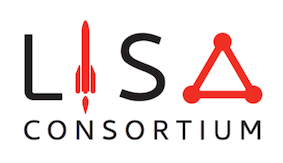Speaker
Description
Extreme mass ratio inspirals (EMRIs) are among the primary targets for the Laser Interferometer Space Antenna (LISA). The extreme mass ratios of these systems result in relatively weak GW signals, that can be individually resolved only for cosmologically nearby sources (up to $z\approx2$). The incoherent piling up of the signal emitted by unresolved EMRIs generate a confusion noise, that can be formally treated as a stochastic GW background (GWB). In this paper, we estimate the level of this background considering a collection of astrophysically motivated EMRI models, spanning the range of uncertainties affecting EMRI formation. To this end, we employed the innovative \textit{Augmented Analytic Kludge} waveforms and used the full LISA response function. For each model, we compute the GWB SNR and the number of resolvable sources. Compared to simplified computations of the EMRI signals from the literature, we find that for a given model the GWB SNR is lower by a factor of $\approx 2$ whereas the number of resolvable sources drops by a factor 3-to-5. Nonetheless, the vast majority of the models result in potentially detectable GWB which can also significantly contribute to the overall LISA noise budget in the 1-10 mHz frequency range.

